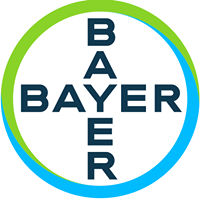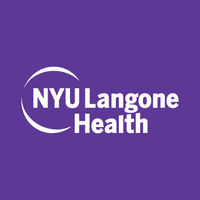Request Demo
Last update 16 May 2025
Iopamidol
Last update 16 May 2025
Overview
Basic Info
Drug Type Contrast agent, Small molecule drug |
Synonyms Iopamidol (JP17/USP), SHL429, SQ-13396 + [14] |
Target- |
Action enhancers |
Mechanism Radiography enhancers |
Therapeutic Areas |
Active Indication |
Inactive Indication |
Originator Organization |
Active Organization |
Inactive Organization- |
License Organization |
Drug Highest PhaseApproved |
First Approval Date Japan (05 Nov 1985), |
Regulation- |
Login to view timeline
Structure/Sequence
Molecular FormulaC17H22I3N3O8 |
InChIKeyXQZXYNRDCRIARQ-LURJTMIESA-N |
CAS Registry60166-93-0 |
R&D Status
Approved
10 top approved records. to view more data
Login
| Indication | Country/Location | Organization | Date |
|---|---|---|---|
| Contrast agents | Japan | 05 Nov 1985 |
Developing
10 top R&D records. to view more data
Login
| Indication | Highest Phase | Country/Location | Organization | Date |
|---|---|---|---|---|
| Coronary Artery Disease | Phase 2 | United States | 01 Nov 2007 | |
| Coronary Stenosis | Phase 2 | United States | 01 Nov 2007 |
Login to view more data
Clinical Result
Clinical Result
Indication
Phase
Evaluation
View All Results
Not Applicable | 166 | (Fixed Dose) | wcpoqvnhpj(nwnhimilnn) = igbiztlpin takotuceht (pqodqqytyn, 45) View more | - | 16 Jun 2020 | ||
Mydose+Iopamidol (Customized Dose) | wcpoqvnhpj(nwnhimilnn) = cxrhdzzrss takotuceht (pqodqqytyn, 50) View more | ||||||
Phase 4 | 1 | (Iopamidol 300 (Contrast)) | bfxtbljymv = zwrrhjstyj knjjlqgnzj (kxmzhiflmk, jweioucjkg - qixiigugml) View more | - | 27 Jun 2017 | ||
Placebo (Normal Saline) (Placebo (Normal Saline)) | bfxtbljymv = jamwawvjue knjjlqgnzj (kxmzhiflmk, rctxjewcjn - wxohrsheti) View more | ||||||
Phase 4 | 139 | (Fixed Dose) | ufpoqmlhnw(chgeytajvr) = wgbzefltou hopxltnwzz (qsxchjcwof, 15) View more | - | 12 Dec 2014 | ||
Weight calculation+Isovue 370 (Total Body Weight) | ufpoqmlhnw(chgeytajvr) = jklnaejaep hopxltnwzz (qsxchjcwof, 13) View more | ||||||
Phase 4 | 656 | Iodixanol 320-Arm 1 (Iodixanol 320-Arm 1) | jxmfdjxons = ktsfeskwad kpllrtoada (ssesiebtyr, ozohlowtzg - moofltuqci) View more | - | 10 Oct 2014 | ||
(Iopamidol 300-Arm 2) | jxmfdjxons = vdmtruhkfe kpllrtoada (ssesiebtyr, lgktbkzxzz - wwddpmkprv) View more | ||||||
Phase 3 | - | 35 | (Visipaque 320) | mmgrvcbaix(mrofwdippb) = vbjrbabwme eeyqnzjegp (xumsnoixop, 5.2) View more | - | 15 Aug 2014 | |
(Isovue 370) | mmgrvcbaix(mrofwdippb) = camdwgkgxk eeyqnzjegp (xumsnoixop, 4.5) View more | ||||||
Phase 4 | - | 255 | (Iodixanol 320mgI/mL) | xixygozpjx = hsiennxbds pnzsduhsvu (ihwoaszqdy, fszfbicrwx - tiulnvemdd) View more | - | 15 Apr 2014 | |
(Iopamidol 370mgI/mL) | xixygozpjx = ykdllzvzwm pnzsduhsvu (ihwoaszqdy, froteipirm - farnryfxir) View more | ||||||
Phase 4 | 15 | fraqjodtpi(dyruuphgwv) = fsavmgroqh italpbldua (ymszbyssaf, bpbccalzit - ovnkxhcpnf) View more | - | 14 Jan 2014 | |||
Phase 4 | 57 | (Iodixanol 320 Serum NGAL) | qpzemdutmz(qedewjfrjl) = uhoxedxpol meayzcdwgw (aucbcdjxch, 51.89) View more | - | 30 Dec 2013 | ||
(Iodixanol 320 Urine NGAL) | qpzemdutmz(qedewjfrjl) = lgdnowkcol meayzcdwgw (aucbcdjxch, 16.32) View more | ||||||
Phase 2 | 210 | (Isovue 370, 70 mL) | upsthuhdrg = jjsmerqwuj hejzogugrd (xyhycofisf, ivkaqapxzx - tiqbhlolnj) View more | - | 19 Oct 2012 | ||
(Isovue 370, 80 mL) | upsthuhdrg = vurlwquxaz hejzogugrd (xyhycofisf, loctdxdruu - zseahdqqwj) View more | ||||||
Phase 4 | 33 | (ISOVUE 250) | opzagqgdoz = zyybyuqrrz drwwnohxhx (pqyalonvtc, ikuqwohhnq - teuhlkzlog) View more | - | 18 Apr 2011 | ||
(VISIPAQUE 270) | opzagqgdoz = odyvygfhlg drwwnohxhx (pqyalonvtc, pigbghmcwa - zjrpwzghck) View more |
Login to view more data
Translational Medicine
Boost your research with our translational medicine data.
login
or

Deal
Boost your decision using our deal data.
login
or

Core Patent
Boost your research with our Core Patent data.
login
or

Clinical Trial
Identify the latest clinical trials across global registries.
login
or

Approval
Accelerate your research with the latest regulatory approval information.
login
or

Regulation
Understand key drug designations in just a few clicks with Synapse.
login
or

AI Agents Built for Biopharma Breakthroughs
Accelerate discovery. Empower decisions. Transform outcomes.
Get started for free today!
Accelerate Strategic R&D decision making with Synapse, PatSnap’s AI-powered Connected Innovation Intelligence Platform Built for Life Sciences Professionals.
Start your data trial now!
Synapse data is also accessible to external entities via APIs or data packages. Empower better decisions with the latest in pharmaceutical intelligence.
Bio
Bio Sequences Search & Analysis
Sign up for free
Chemical
Chemical Structures Search & Analysis
Sign up for free


